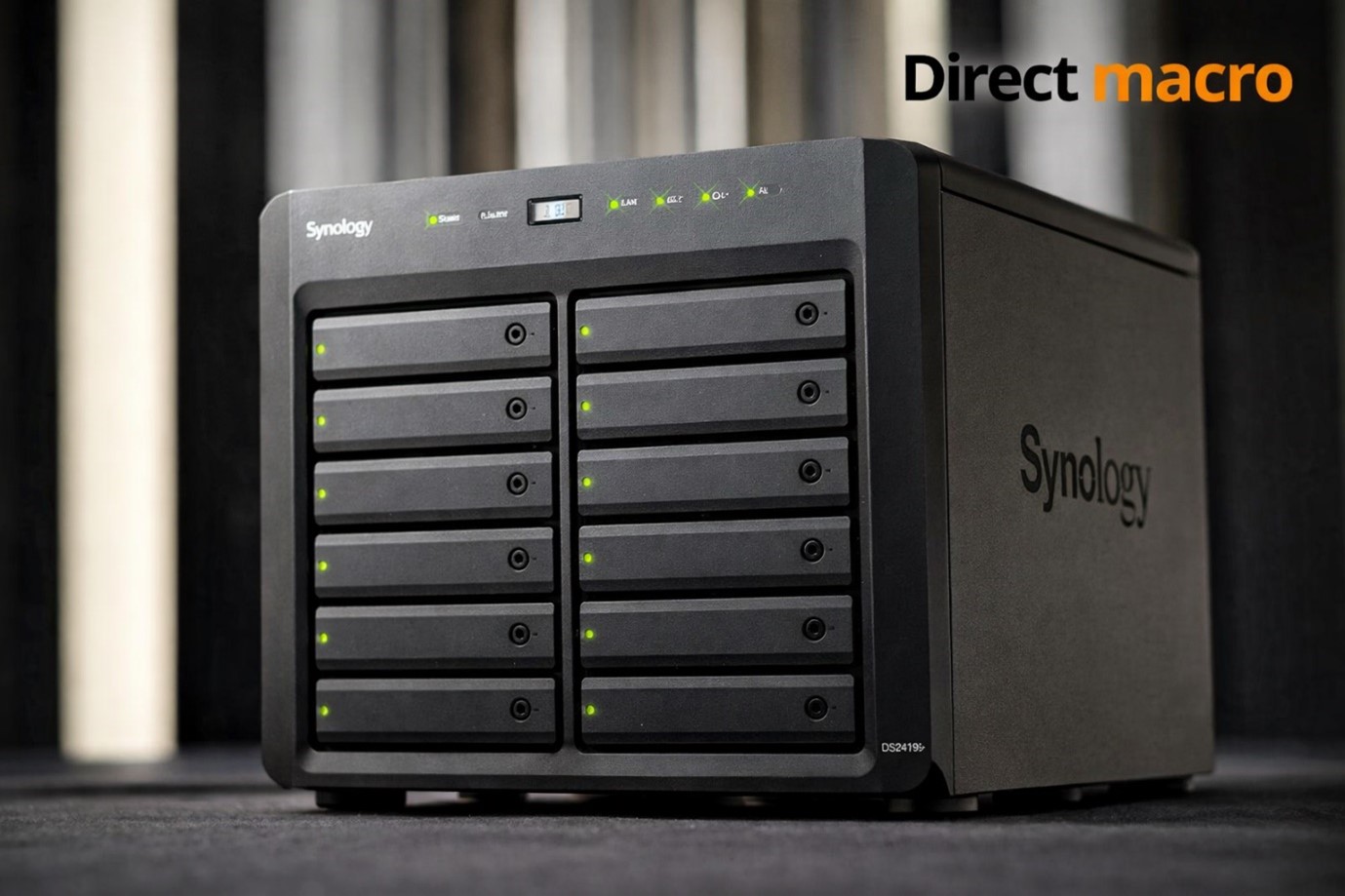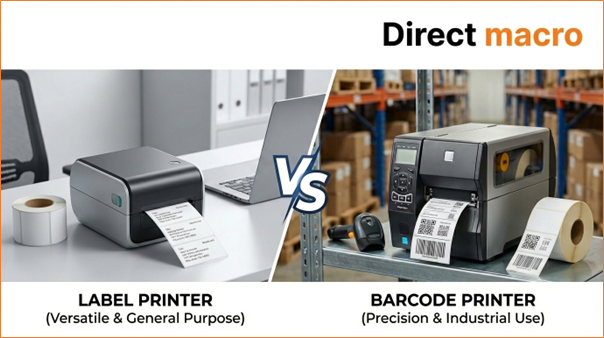How to Build a Multimedia Server in 2025: Complete Guide
Media servers have become an increasingly popular solution for managing and streaming personal media collections. With advanced streaming software like Plex, you can easily manage and enjoy your media collection. Building a media server system is not as complicated as it might seem. You can use various hardware, from an old office computer to a Raspberry Pi. However, for those seeking better performance and efficiency, building a new machine is the best way to go. This guide will show you how to build and configure a powerful, flexible, and cost-effective multimedia server in 2024.
What is a Multimedia Server?
A multimedia server is a specialized device that stores, manages, and shares various media files, including videos, music, photos, and books. Acting as a central hub, it aggregates all this media and makes it accessible from a single location within your home network. These servers can range from a simple Network Attached Storage (NAS) device to a more complex home theater PC. Unlike commercial streaming servers that deliver content over the internet, a home media server focuses on local network streaming. Additionally, it can run applications to allow remote access to your media from anywhere via the internet. If you aim to build a multimedia server, you can enjoy a tailored and efficient media management and streaming experience.
Media Server 101: Get Started
What Hardware Do You Need?
It is mandatory to select recommended hardware when building a multimedia server. Here’s a detailed recommendation to help you find the right hardware for your next server build:
Central Processing Unit
Your server’s nucleus is the processor. An Intel Core i3 or equivalent processor is good for basic streaming. Nevertheless, for 4K streaming and transcoding, selecting a more potent CPU, such as the Intel Core i7 or AMD Ryzen 7 is advisable. These CPUs provide exceptional performance and the ability to transcode multiple streams simultaneously.
Motherboard
Find a server motherboard that is compatible with your CPU and has a sufficient number of SATA connectors to meet server storage requirements. If you plan to pick it, it should also be compatible with features such as ECC memory. The ASRock B550M Steel Legend is a prime representation of this, as it is equipped with multiple SATA interfaces and supports ECC memory.
Random Access Memory
A minimum of 2GB server memory is necessary for basic operations; however, 8GB or more is recommended for optimal performance, particularly if you want to manage multiple simultaneous streams or operate additional services. ECC memory may be advantageous for certain configurations in order to improve data integrity.
Storage Device
Look and consider a combination of HDDs and SSDs. SSDs are recommended for the operating system and frequently accessed files due to their speed, while large HDDs are recommended for just media storage. Look for NAS-specific HDDs, like the ST10000VN0004 Seagate IronWolf, which are designed for 24/7 operation and reliability.
Case and Power Supply
Find a case with enough drive spaces and adequate ventilation to meet your storage requirements. The Fractal Design Node 804 and the Fractal Design Define 7 XL are examples of cases that provide exceptional cooling and flexibility. You need to ensure your power supply is stable and can handle all your media server components. The Corsair RM650x, a 650W power supply, is a great choice for most setups.
Network Interface
A network connection that is both reliable and quick is mandatory if you aim to build a multimedia server. Look for a minimum of a Gigabit Ethernet connection, but for optimal performance and future-proofing, consider 2.5GbE or even 10GbE, particularly if you have a high number of concurrent users.
Additional Components
Depending on your needs, a GPU may be necessary for hardware transcoding, particularly if you use a CPU without integrated graphics. Also, consider additional cooling solutions to keep your components at optimal temperatures, especially if your server runs 24/7.
In 2024, mini PCs and NAS-specific cases are excellent choices due to their compact size and efficiency. Options like the Mac mini or Intel NUC offer a good balance of performance and cost.
Best Operating Systems for Media Server
When you build a multimedia server, choosing an operating system is fundamental. These are some of the alternatives that are most commonly used in media servers:
- Open Media Vault (OMV)
- Ubuntu Server
- FreeNAS/TrueNAS Core
- Unraid
- Proxmox VE
How to Build a Media Server: Step-by-Step
Assemble the Hardware
Install the CPU and Cooler
- Placement: Handle the CPU by the edges to avoid damaging the pins. Place it onto the motherboard’s CPU socket, aligning the markers on the CPU and socket.
- Thermal Paste: Apply a small, pea-sized amount of thermal paste on the CPU surface. This ensures effective heat transfer.
- Cooler Installation: Attach the CPU cooler by securing it with the provided brackets or screws. Refer to the cooler’s manual for specific instructions as different models might have unique mounting mechanisms.
Insert the RAM
- Seating the RAM: Insert the RAM sticks into the memory slots, ensuring the notch on the RAM matches the slot. Press down until the clips on the side lock the RAM in place.
- Verification: Double-check that each RAM module is fully seated to prevent boot issues.
Mount the Motherboard
- Positioning: Place the motherboard inside the case, aligning it with the standoffs pre-installed in the case.
- Securing: Use the screws provided with the case to secure the motherboard. Ensure all screws are tightened evenly but avoid over-tightening.
Connect the Power Supply
- Installation: Place the power supply (PSU) in its designated spot, usually at the bottom or top rear of the case.
- Connections: Connect the 24-pin ATX power connector to the motherboard. Also, connect the 8-pin CPU power connector near the CPU socket. Plug in any necessary peripheral power cables for components like GPU or additional drives.
Install Storage Drives
- Mounting: Mount SSDs or HDDs into their respective bays. Ensure they are securely fixed to prevent vibrations.
- Connections: Connect the drives to the motherboard using SATA cables. Also, connect power cables from the PSU to the drives. If using NVMe SSDs, insert them into the M.2 slots on the motherboard and secure them with screws.
Install GPU & NIC
- GPU Installation: If you need a dedicated GPU, insert it into the appropriate PCIe slot. Secure it with screws to the case.
- Network Cards: Install any additional network cards or other expansion cards as needed. Ensure all components are properly seated and secured.
Install the Operating System
Create a Bootable USB Drive
- Use a tool like Rufus to create a bootable USB drive with your chosen OS (e.g., Ubuntu Server, TrueNAS, Unraid).
Boot from the USB Drive
- Insert the USB drive into the server and boot from it.
- Access the BIOS/UEFI settings to set the USB drive as the primary boot device.
Follow Installation Instructions
- Follow the on-screen prompts to install the OS.
- Configure initial settings such as network configuration and storage setup.
Configuring Your Media Server
Assign a Static IP Address
- Access Router Settings: Log into your router’s web interface using its IP address (commonly 192.168.1.1).
- Assign IP: Navigate to the DHCP settings and assign a static IP address to your server’s MAC address.
Ensure Proper Network Settings
- Subnet Mask and Gateway: Verify that the subnet mask (usually 255.255.255.0) and gateway (your router’s IP) are correctly set.
- DNS Configuration: Use reliable DNS servers like Google (8.8.8.8, 8.8.4.4) to ensure proper connectivity.
Create Storage Pools or Volumes
- Access Storage Manager: Use the storage manager tool of your server’s operating system (e.g., TrueNAS, Synology DSM).
- Create Pools: Combine multiple drives into a storage pool. This allows for better management and scalability of your storage space.
- Volumes: After creating a pool, set up volumes to organize your data.
Use RAID Configurations
- Choose RAID Level: Depending on your needs, configure RAID 1 for redundancy, RAID 5 for a balance of performance and redundancy, or RAID 10 for high performance and redundancy.
- Implement RAID: Use tools like mdadm on Linux or the RAID setup in TrueNAS to configure your RAID array.
Install Media Server Software
- Plex, Emby, Jellyfin: Download the installation package for your chosen media server software. For example, Plex can be downloaded and installed using the command sudo dpkg -i plexmediaserver_*.deb on Linux.
- Follow Setup Instructions: Open the web interface of your media server (e.g., http://localhost:32400/web for Plex) and follow the setup wizard to configure your media libraries and basic settings.
Organize Your Media Files
- Directory Structure: Create well-structured directories such as Movies, TV Shows, Music, and Photos. This helps in better management and scanning by media server software.
- Naming Conventions: Use consistent and clear naming conventions like MovieName (Year).ext for movies and ShowName – S01E01 – EpisodeTitle.ext for TV shows. This helps the media server to fetch accurate metadata.
Configure Remote Access
- Enable Remote Access: In your media server settings, enable remote access. For Plex, this can be done by navigating to Settings > Server > Remote Access.
- Port Forwarding: Set up port forwarding on your router for the required ports (e.g., port 32400 for Plex) to allow access from outside your home network.
Implement Security Measures
- Strong Passwords and Two-Factor Authentication (2FA): Use strong, unique passwords for your media server accounts. Enable 2FA if supported to add an extra layer of security.
- VPN: Consider using a VPN to encrypt your internet connection and hide your server’s IP address for security and privacy.
Maintaining and Upgrading Your Media Server
Regular Maintenance Tasks
Use built-in tools like Plex’s Scheduled Tasks or third-party software like Nagios or Zabbix for comprehensive monitoring. These tools help track CPU, memory, and disk usage, providing real-time alerts for any unusual activities or potential issues. Regular checks on server logs can help identify and troubleshoot errors promptly.
- Monitor Resource Usage: Keep an eye on CPU, memory, and disk usage. High usage levels might indicate the need for hardware upgrades or workload redistribution.
- Check RAID Status: Regularly verify the status of your RAID configuration to ensure data redundancy and identify failing drives before they cause data loss.
- Update Software: Regularly update your server’s operating system and all installed software to protect against vulnerabilities and improve performance. Schedule these updates during low-usage periods to minimize disruption.
Data Backups
Backing up your data is one of the most critical maintenance tasks. Regular backups ensure you can recover from data loss due to hardware failure, accidental deletion, or malware attacks.
- Schedule Regular Backups: Perform daily backups and store them in a secure offsite location. Use automated tools to simplify this process and ensure consistency.
- Test Backup Integrity: Periodically test your backups by restoring files to ensure they are complete and usable. This practice helps confirm that your backup procedures are effective and reliable.
FAQs
What is a media server, and how does it work?
A media server is a device or software that stores, manages, and streams digital media files such as movies, music, and photos. It allows users to access and play this content on various devices over a local network or the internet. The server uses media management software like Plex, Emby, or Jellyfin to organize files and provide a user-friendly interface. Media servers can transcode files on the fly to ensure compatibility with different devices, adapting the media format to match the device’s requirements and network conditions.
What is the primary purpose of a media server?
The primary purpose of a media server is to centralize your media collection, making it easily accessible and streamable within your home network. It acts as a hub where all your digital content is stored and managed, providing seamless access to movies, music, TV shows, and photos from any connected device. This centralized approach enhances organization, ensures better management of media libraries, and provides flexible streaming options tailored to various devices and user preferences.
Do people still use media servers?
Yes, media servers remain popular, especially among those who prefer personal media management and streaming. Unlike commercial streaming services, media servers offer more control over your media library, allowing you to customize your collection and access it without internet dependencies. Enthusiasts use media servers to create a personalized streaming service with the ability to organize, manage, and stream high-quality content without the limitations often imposed by commercial services.
What is the difference between a media server and a streaming server?
A media server focuses on local network streaming of personal media collections, enabling users to access and stream content stored on the server to devices within the same network. In contrast, a streaming server delivers content over the internet to a broader audience, often used by commercial streaming services like Netflix or YouTube. Media servers are typically used for private collections and offer features like transcoding for compatibility while streaming servers require robust infrastructure to handle large-scale streaming and varied client devices.
Do you need advice on buying or selling hardware? Fill out the form and we will return.

Sales & Support
(855) 483-7810
We respond within 48 hours on all weekdays
Opening hours
Monday to thursday: 08.30-16.30
Friday: 08.30-15.30








